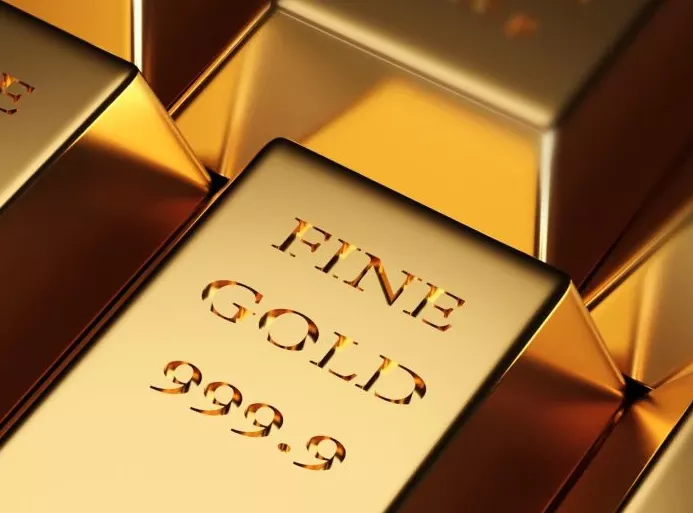The SPDR Gold Shares ETF (GLD) finished the week near its all-time high of $271.95, reflecting the strong momentum that has carried gold prices up by approximately 25% since the beginning of 2024. At the time of writing, GLD was priced at $270.74, slightly off from Thursday’s peak. This price movement highlights the growing influence of global geopolitical tensions and economic uncertainties on the gold market, signaling a strong demand for the safe-haven asset.
Trump Factor Boosts Gold Demand
Gold has long been considered a reliable store of value during times of geopolitical instability and economic turmoil. This year, the metal has experienced a rally driven by several key factors, including heightened tensions in the Middle East, the ongoing Russia-Ukraine war, and, notably, the policies of U.S. President Donald Trump. His actions and rhetoric have caused market uncertainty, leading investors to seek the security of gold.
From the moment Trump was inaugurated, concerns about the potential inflationary effects of his policies began to emerge. As the new administration embarked on trade negotiations and economic reforms, market participants feared these moves would lead to increased inflation, thus driving gold’s appeal as a hedge. A day after his inauguration on January 20th, 2024, the GLD ETF surged to its highest level in over two months as investors sought safety in gold amid shifting market conditions.
As Trump’s second term progressed, those concerns deepened. In particular, his stance on foreign policy and his approach to international trade have exacerbated market uncertainty. On Thursday, gold prices hit a fresh all-time high of $2,956.05 per ounce, reacting to the geopolitical fallout surrounding Trump’s foreign policy decisions, particularly his shifting position on the Russia-Ukraine conflict. In an unexpected move, Trump referred to Ukrainian President Zelensky as a “dictator” after the latter criticized Trump’s views on the ongoing war. This conflict of words has deepened tensions between the two leaders and further muddied the prospects for a peace agreement, driving increased demand for safe-haven assets like gold.
Furthermore, Trump’s tariffs—especially his ongoing trade war with China and threats to impose new tariffs on other nations—have intensified concerns about inflation. This has led to greater demand for gold, as it is viewed as a reliable hedge against rising prices. Since taking office, Trump has implemented several tariffs, reshaping trade relationships and raising fears of prolonged economic instability. As these factors play out, investors continue to seek out gold as a safeguard for their portfolios.
The minutes from the Federal Reserve’s January meeting also emphasized the growing economic risks posed by Trump’s policies. According to the minutes, the Fed officials expressed concerns that the president’s approach could “hinder the disinflation process,” which could further exacerbate inflationary pressures in the U.S. The minutes also pointed to heightened uncertainty regarding potential changes in trade, immigration, fiscal, and regulatory policies under the Trump administration, which has contributed to the ongoing demand for gold as a safe-haven investment.
Central Bank Support for Gold
In addition to investor demand driven by geopolitical tensions and inflation fears, central banks have also played a crucial role in supporting gold prices. In 2024, gold purchases by central banks worldwide were a significant factor behind the rally in the precious metal. Central banks, particularly in emerging markets, have been increasing their gold reserves as part of a broader strategy to diversify their holdings away from the U.S. dollar and hedge against economic risks, such as inflation and currency fluctuations.
As we move into 2025, this trend is expected to continue. According to Goldman Sachs, central-bank buying will be a major driver of gold prices in the coming year. The investment bank has adjusted its price forecast for gold to $3,100 per ounce by the end of 2025, citing the ongoing shift in global monetary policy and the increasing demand for gold as a reserve asset.
The rise in gold-backed ETFs, such as the SPDR Gold Shares ETF, reflects the growing investor confidence in gold as a safe and stable investment. The GLD ETF, which tracks the price of gold, has seen a significant increase in holdings as investors continue to seek exposure to the precious metal. This trend is expected to accelerate in the coming months, as the underlying fundamentals for gold remain strong. With the global economic outlook uncertain and geopolitical tensions showing no signs of abating, demand for gold is likely to remain robust, further driving up prices.
Outlook for Gold in 2025
Looking ahead, gold’s outlook remains positive, with central banks and investors continuing to seek out the asset as a hedge against inflation, geopolitical instability, and economic uncertainty. The ongoing geopolitical risks, particularly the tensions surrounding Trump’s policies and the Russia-Ukraine conflict, are expected to keep gold prices elevated. Additionally, the continued buying of gold by central banks to diversify their reserves away from the U.S. dollar is likely to provide further support to the market.
Gold’s status as a safe-haven asset in times of uncertainty has never been more pronounced, and as we move into 2025, it’s clear that both institutional and retail investors will continue to turn to the precious metal to protect their wealth. As a result, the bullish momentum seen in 2024 is expected to persist, with some analysts forecasting that gold could reach new all-time highs in the coming year. With its solid fundamentals and strong demand from central banks and investors, gold looks set to remain a key player in global financial markets in 2025.
Related topics:
Man Jailed For 5 Years For Gold Bullion Scam
Great Boulder Resources Announces Major Gold Find In Side Well
Mumbai DRI Seizes Smuggled Gold Worth Rs 9.95 Crore

